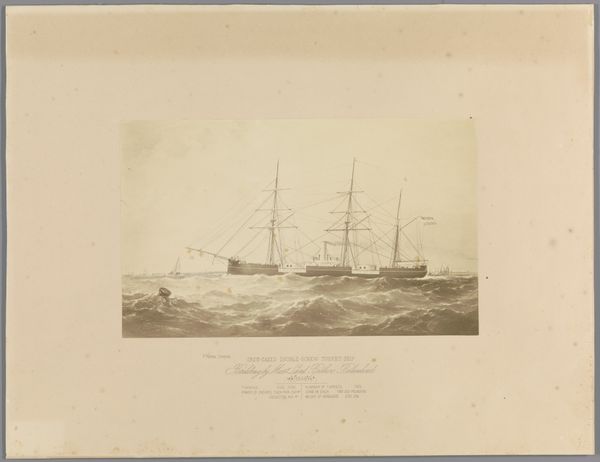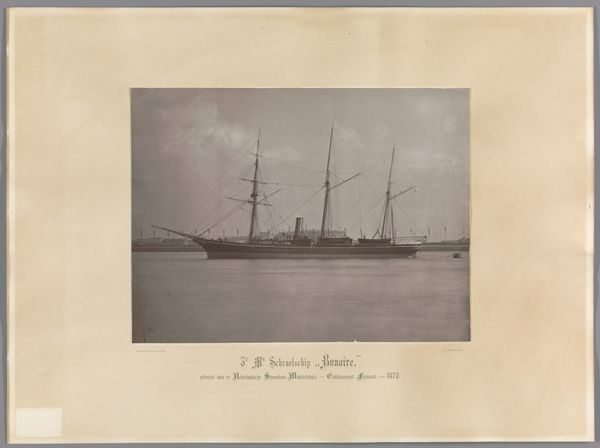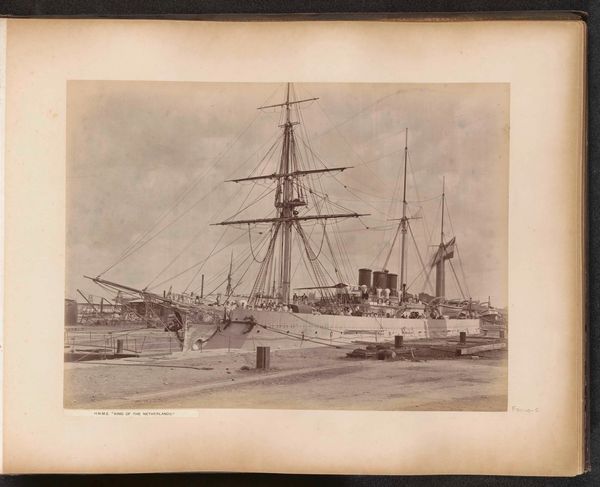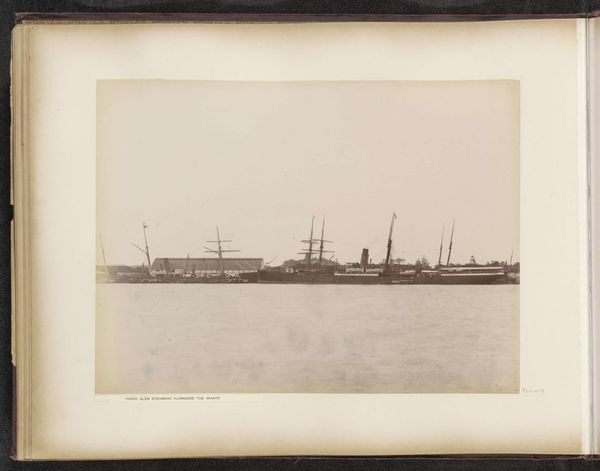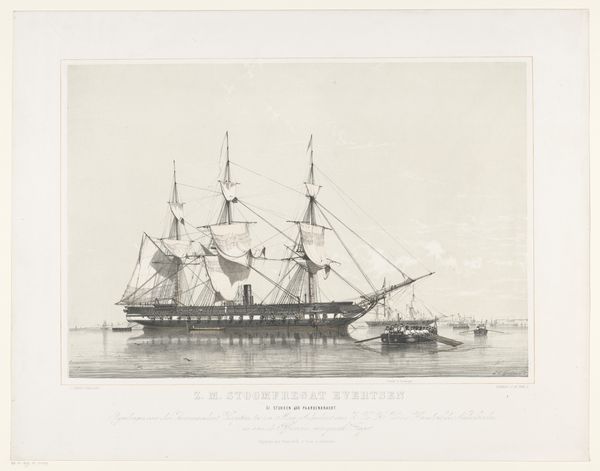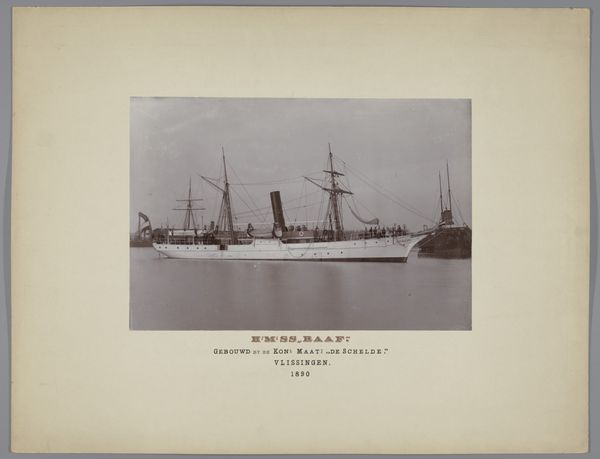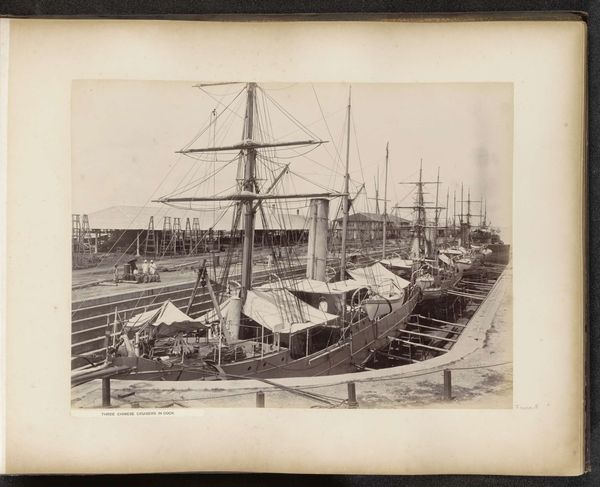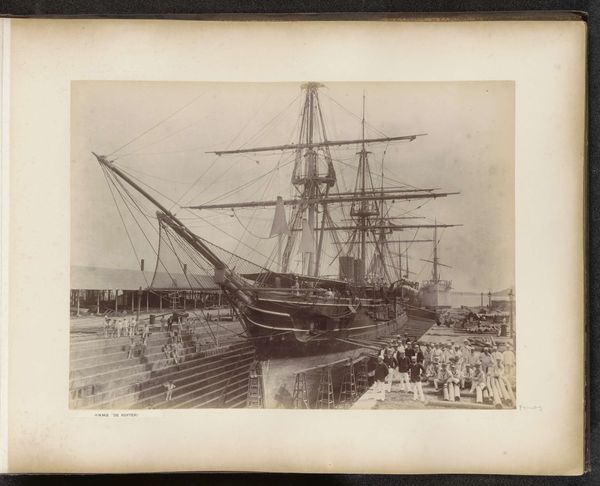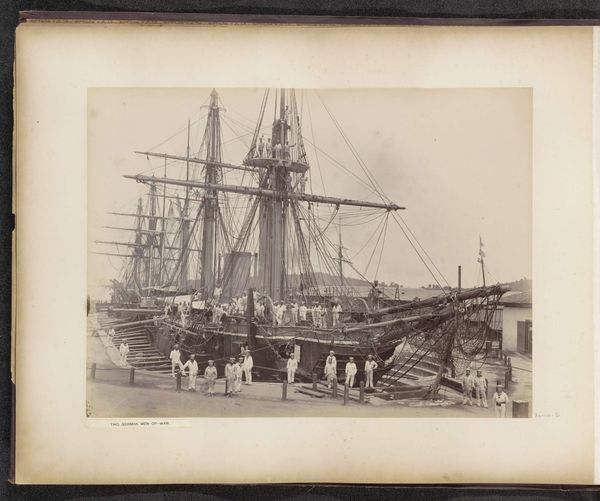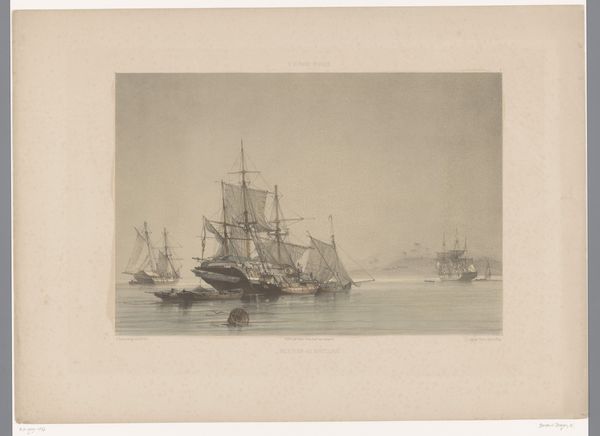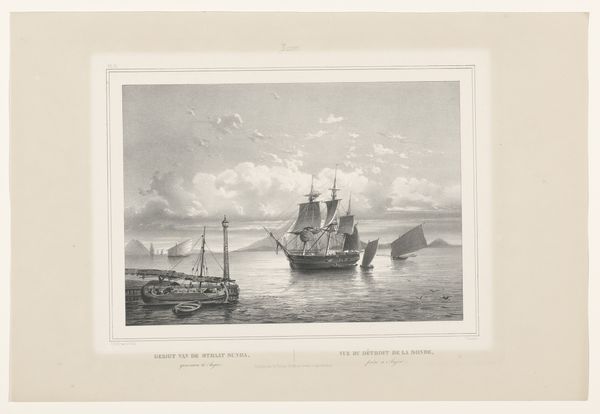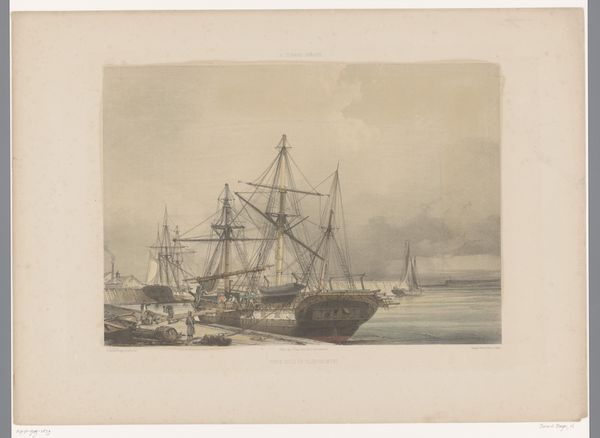
#
photo of handprinted image
#
aged paper
#
pale palette
#
ink paper printed
#
parchment
#
light coloured
#
old engraving style
#
white palette
#
watercolour illustration
#
watercolor
Dimensions: height 212 mm, width 275 mm
Copyright: Rijks Museum: Open Domain
Editor: We're looking at "Schepen voor anker op het Suezkanaal bij Al Qantarah (Kantara)" by Hippolyte Arnoux, created before 1883. It appears to be an early photographic print, sepia-toned. It’s quite striking how the texture of the paper and the printing process add to the image of these ships lined up in the canal. What stands out to you about it? Curator: The image's materiality is paramount. Consider the labor involved in creating this image. The extraction of materials for the photographic process, the manufacture of equipment, and the physical act of printing all point to a specific set of social relations and a technological moment in history. Look at the image—the hand-printed quality, the subtle imperfections, tell a story about the means of production that would be very different today. Editor: So you're saying the physical process is as important as the image itself? Curator: More so, perhaps! The subject—ships in the Suez Canal—speaks directly to the context: global trade, colonial ambitions, the harnessing of technology for economic and political power. But it’s the print itself, the tangible result of that historical process, that embodies these forces. Consider what kind of work the labourers were employed for. What does this say about what we perceive as a photograph? Editor: It's amazing to think of it as a manufactured object, and a product of all those intertwined systems rather than just a snapshot. The age of the print really emphasizes that too. Curator: Exactly. The image documents a site of intense industrial and political activity, but its own creation also reveals a parallel, often overlooked, system of material extraction and labour that made that activity possible. What do you make of the composition now? Editor: It seems like a very intentional layering, both visually and in terms of production. The ships, the canal, the print itself – it’s all interconnected and speaking to that larger material history. Thanks, this gives me a new appreciation for it!
Comments
No comments
Be the first to comment and join the conversation on the ultimate creative platform.
